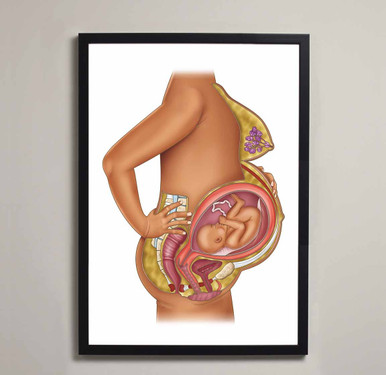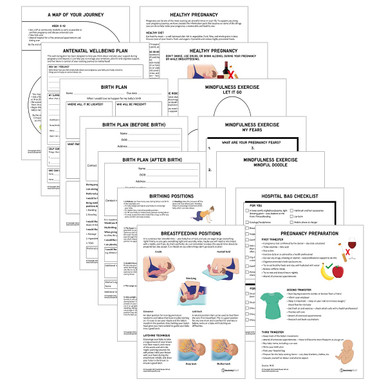C-Section Aftercare – What you Need to Know
Giving birth is one of the most magical, life-changing experiences you will ever have. Not only are you bringing a new life into the world, but you also get to meet your newborn for the first time.
As magical and life-changing as giving birth can be, the actual process of childbirth is not easy, far from it, in fact. Giving birth can be extremely physically demanding on your body, especially if you give birth via a caesarean section, also known as a C-section.
A C-section may be required if women giving birth are suffering with underlying health issues, if there is a blockage in the birth canal, if there is a pelvic fracture, if the baby is in a breech position (when the baby’s feet come first as opposed to the head) and is unable to be moved, or if there are abnormalities with the baby’s development.
A C-section is a standard surgical procedure, yet it is still relatively invasive, and there is a fair amount of recovery required. If you’re concerned about a C-section, here’s a quick C-section aftercare guide to help reassure you.
What is a C-section?
A C-section, also known as a Caesarean section, is a surgical procedure in which an incision is made in the stomach and the womb, allowing a baby to be delivered that way rather than the traditional way in which children are born.
In the UK, roughly 1 in every 4 women that give birth will give birth via C-section.
A C-section will be carried out if a vaginal birth is deemed too dangerous or if other underlying health or medical issues are present.
Typically, in the UK, planned C-sections will be performed from the 39th week of pregnancy onwards. In some instances, however, medical emergencies may call for emergency C-sections to be performed with no prior warning or planning.
What happens with a C-section?
If doctors deem that a C-section is the safest way of giving birth, you will need to visit the hospital around one week before the operation, just so that you know what to expect and so the doctors can carry out routine tests.
Here you’ll be told what to expect, you will have a blood test carried out, you will be given medication to take before the operation, and you may need to sign a consent form.
During the procedure, after having been given an anaesthetic (your doctor may decide you need a general anaesthetic, (but most are local or regional), this way, you would be asleep for the procedure), you will lie on an operating table with a screen placed across your stomach so that you can’t see the operation being carried out. Most C-sections are carried out using an epidural or spinal anaesthetic, meaning you should feel no pain from the waist down. Surgeons will then make a small 10 – 20cm cut into your abdomen (tummy) and womb –usually just below the bikini line and done horizontally.
Now, the doctors and nurses will deliver your baby through this opening. This usually lasts around 5 –10 minutes, though obviously, you won’t feel anything (except some pulling but no pain) because of the anaesthetic.
After being shown your baby, you will receive an oxytocin injection which encourages the womb to contract and slow down blood loss.
Now, your womb will be closed up with dissolvable stitches, along with the cut in your stomach. In some cases, your stomach will be closed with staples or stitches that will need to be taken out after a few days.
Now you can begin your recovery before the time comes for you to become a mother.
C-section aftercare tips
Despite a Caesarean section being a very common surgical procedure, that doesn’t mean it isn’t taxing on the body.
The procedure, combined with the effects of being pregnant for nine months or so, means that there is a lot of recovery required after a C-section before you can be a mother full-time.
If you’re due to undergo a C-section or simply wish to learn more about the procedure, here are several C-section aftercare tips for you to follow.
Get settled at the hospital when you arrive
Before you undergo the procedure, you should first ensure that you are nice and settled in the hospital.
After having a C-section, you’ll likely be in the hospital for around 4 days, though sometimes you may be required to stay shorter or longer. Regardless, you’ll be away from home for several days, so you must ensure you’re comfortable.
Bring a toiletries bag, items for the baby, a phone or tablet, a charger, and anything else which will help keep you comfortable and relaxed as you recover.
Get plenty of rest
After experiencing any form of trauma, rest is the best way that your body is going to recover.
While in the hospital, help will be available for your baby, though you will no doubt be keen to pull mum duties. However, the saying goes, ‘sleep whenever your baby sleeps’.
Stay in bed as much as possible, relax, and try to sleep as much as possible, as this is how your body and mind will heal after the operation.

Be careful at home
Once you do go home with your baby, be very careful.
Try not to go up and downstairs too much, avoid strenuous bending over, don’t lift heavy objects, and don’t try to do too much.
Aim to do the bare minimum for the next couple of weeks and allow your body plenty of time to heal and recover.
If you need to sneeze or cough, try to hold the area where you are stitched up to help protect it and prevent the wounds from opening up again.
When you get out of bed, try rolling onto your side in the bed, then drop both legs over the side of the bed and push yourself up sideways into a sitting position.
It’s essential to spend some time on your self-care and spend quality time cuddling your baby. While visitors and family can be a support, it could be an idea to ask them to do laundry chores, run errands, or help with older children while you spend time with the baby. Often with the best intentions, visitors or family members will call over and spend hours minding the baby while you struggle to meet house chores. This should never be the case. Babies need time with their mothers and shouldn’t be passed around to too many new people, especially in the early days.
Driving after a Caesarean section
Check with your insurance company that you are covered. Women are generally advised to wait until 4 to 6 weeks after birth. Also, ensure that you can concentrate fully on driving and can wear a seat belt comfortably – you may be more comfortable with some padding (e.g., a folded towel) between your tummy and the belt. Ensure you can also look over your shoulder and turn the steering wheel without pain or discomfort,
perform an emergency stop without undue pain – give it a try with the engine off before going out for the first time.
Get gentle exercise
Despite being told to rest and relax, that doesn’t mean that you can’t get some light exercise. In fact, light exercise can be very beneficial.
If you get the chance, go for a light walk, even if it’s just around the garden or up and down the street. The exercise will help improve your mood and prevent blood clots, constipation, and muscle stiffness.
Take your pain meds
After your C-section, you are going to be sore for a while. After all, you’ve been cut open, so you’ll be sore, which is why pain management medications are so important.
After being discharged, you’ll be prescribed pain-relieving medication. Make sure you take them. As time goes by, you could go with regular over-the-counter medications such as ibuprofen and paracetamol.
Drink plenty of water and eat healthily
After a stressful time, it’s only natural that you’ll be craving a treat or two, and there’s absolutely nothing wrong with that, as long as it is just one or two treats.
For the vast majority of the time, especially during your recovery, try to ensure that you drink plenty of water to stay hydrated and eat healthy foods. Healthy foods will help speed up your recovery and boost your immune system while also making you feel better.
Eat plenty of fruits and vegetables, along with lean proteins, healthy fats, and slow-release complex carbohydrates.
You’ll also need to ensure you drink plenty of water to help with going to the toilet. This brings us to…
Use a stool softener
As well as drinking water and eating fibrous foods, you should also use a stool softener after having a C-section.
After having a C-section, because of the trauma, along with the anaesthesia and pain-relieving medication, you could become constipated.
Constipation is not pleasant at best, but following a C-section can be painful and dangerous, as straining could cause your wound to re-open.
Stool softeners, along with plenty of roughage and water, should help you to avoid constipation as you recover from your Caesarean.
For more information, take a look at our C-section Aftercare Leaflet.
Related products
View All












